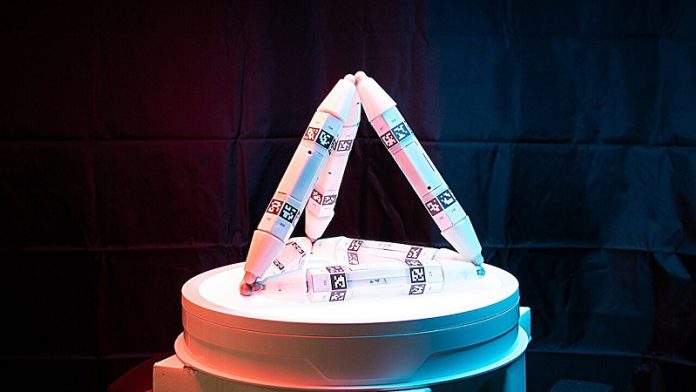
Imagine a robot that can fix itself when broken or even grow stronger by absorbing parts from its surroundings—or from other robots.
That future is closer than you think. Scientists at Columbia University have created a new kind of robot that doesn’t just think on its own—it can physically grow, adapt, and heal itself.
In a study published in Science Advances, researchers introduced a breakthrough they call “Robot Metabolism.”
Inspired by how living creatures absorb nutrients and repair their bodies, this process allows robots to take in new materials—either from their environment or other machines—and use them to build or repair their bodies.
This represents a huge shift from traditional robots, which are usually built as closed systems, unable to evolve or recover on their own.
Philippe Martin Wyder, the lead author of the study, explains that true independence for robots means more than just making smart decisions.
It also requires the ability to physically take care of themselves. Just as animals and plants grow and adapt using what’s around them, these robots can now do something similar.
To bring this idea to life, the researchers developed a simple robot module called a “Truss Link.” It’s a bar-shaped stick with magnetic connectors that allow it to attach to other modules at different angles—kind of like the pieces in a Geomag toy. These links can self-assemble into larger shapes, from flat patterns to full 3D robots.
One experiment showed a robot shaped like a tetrahedron (a pyramid with four triangular sides) that added a new Truss Link to form a walking stick. This small change helped it move downhill 66% faster—showing how the robot could improve itself in real time by reconfiguring its body.
Hod Lipson, a co-author of the study and head of the Creative Machines Lab at Columbia, says this is a major leap forward. While artificial intelligence has helped robot “minds” grow smarter, their “bodies” have stayed rigid and unchanging. In contrast, nature uses building blocks like amino acids to create life that can grow and heal. The goal is to bring that same flexibility and resilience to robots.
This concept could be especially useful in places where human support is limited or impossible, like space missions, disaster zones, or deep-sea exploration. In such cases, robots that can repair themselves or build new tools on the fly could be invaluable.
Wyder notes that Robot Metabolism gives artificial intelligence the power to act in the physical world—reshaping and rebuilding just like it now rewrites text or code. Lipson adds a note of caution, pointing out that while the idea of self-replicating robots may sound like science fiction, it’s also a practical necessity.
As we rely more on robots for everything from transportation to defense, we’ll eventually need them to maintain themselves without constant human help.
This new kind of robotic independence opens a path toward machines that are not just smart—but also self-sustaining and adaptable, much like living things.
Source: Columbia University.



